Paper mills
Susan Ing
Summary
From the 15th to the 18th centuries, paper was made by hand in small watermills. The process involved the mashing of rotted rags into a pulp by stamping hammers, which was then placed into a vat of lukewarm water and formed into a sheet of paper on a wire meshed mould. The water was then pressed out and the sheets air dried. Eventually more advanced paper making machines took over in the 19th century.
Details
By the time of the first paper mills in England, the principles of making paper by hand, using the vat method in water-driven mills, had long been established. These principles remained fundamentally the same until the eighteenth century when papermaking machines were invented. One of the first English paper mills was Sele Mill, just outside Hertford on the Beane, a stream flowing into the river Lea. The principal early method for making paper is as follows: After having been sorted, cut, washed and allowed to ferment, rotted rags were placed in water laden troughs called mortars. They were macerated into pulp by a battery of iron-tipped wooden stamping hammers. These were lifted and dropped by the cams fitted to the main shaft, worked by waterpower.

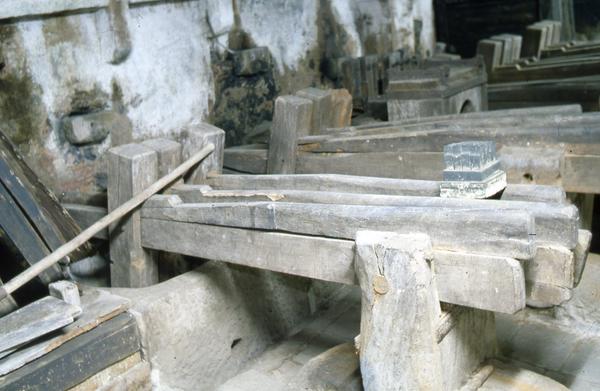
Stuff resulting from this beating process was placed with water in a vat and kept lukewarm, then agitated by means of a pole or potching stick, which towards the end of the 18th century was replaced by a mechanical paddle called a ‘hog.’ From pulp the vatman formed a sheet of paper by inserting a wire meshed mould of the required size and giving it a series of shakes, so drawing off the water and causing fibres of pulp to intertwine and form a matted layer on the surface of the mould.
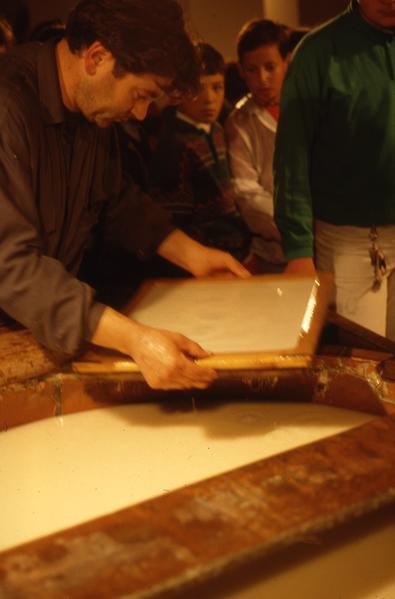

As each sheet of paper was thus formed, it was taken off the mould and laid by the coucher, alternately with a sheet of woollen felt, to form a pile. When complete – usually consisted of six quires or 144 sheets of paper – this ‘post’ was put in the screw lever press and as much water as possible was squeezed out. After being air-dried on lines (ropes covered with horsehair or cow-hair which did not stain the paper) the sheets were sized, if paper was to be made capable of taking ink, and were pressed, dried and finished.

The numbers of those working in the mills varied considerably from mill to mill. The maximum labour force in a single-vat mill probably consisted of a number of women and children to prepare materials, and sort and pack paper, together with a vatman, a coucher, a layer (to separate sheets from the felts), a man to press, a man at the mortars or engine and a finisher.

Working in the early, small, cramped mills must have been very arduous, particularly for the vatman due to the heat of the vat, the constant dampness and the continuous physical strain involved in the monotonous repetition of the shaking motion required to create paper in the mould. Poor ventilation in the raghouse could give unpleasant conditions for those who did sorting, dusting, and cutting rags, and often led to workers developing lung problems.
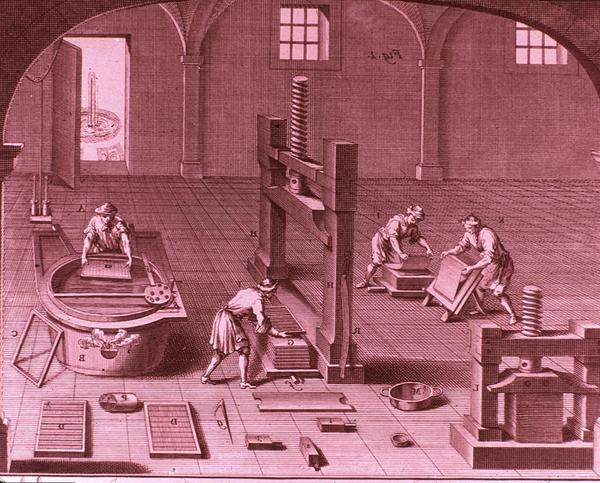
Linen rags were used in making the best quality papers, coarser rags, netting, cordage, canvas, bagging and other materials of flax and hemp in manufacture of brown and other common papers. Rivers or ponded waters were used to drive machinery by which the materials were pulped, and abundant supplies of water were required for paper making process.
Many problems existed, particularly in the early stages of paper manufacturing. People worried about contaminated rags, particularly during the times of plague. Combined corn and paper mills were unpopular as the paper was considered to be of inferior quality. Environmental concerns were another significant problem, particularly regarding water pollution and fish being killed in the wheels. A lot of noise was created as well as unfavourable sights and smells, and the competition from other industries for the water was another hurdle.
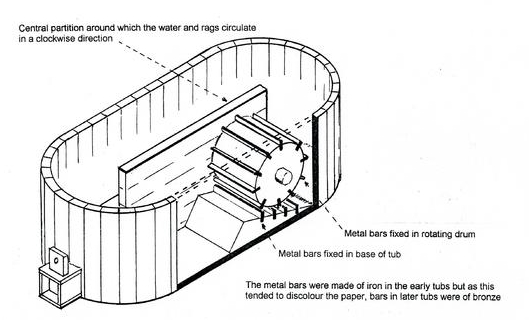
In the 18th and 19th centuries papermaking was transformed by various technological developments such as the Hollander Beater, steam power and the Fourdrinier machine, whilst improved transport with the development of railways led to the closure of many smaller mills. The technology continued to advance into the 20th century, leading to the modern integrated pulp and paper mill.
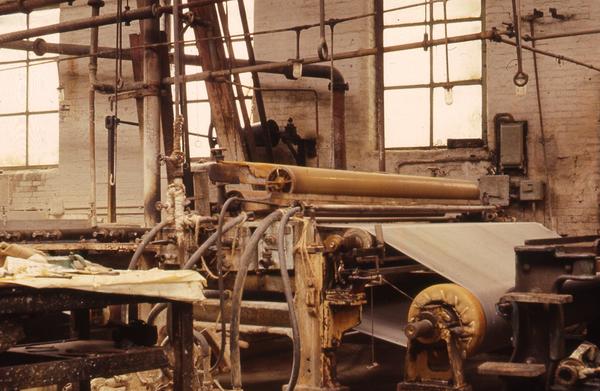
Links
More information about the history of paper making can be found in these articles:
- Rags to riches
- Albury Park Paper Mill and its Forged Assignats
- Forged French Assignats Part II: Britain’s and Charles X’s Roles
- Surprising connections between mills, art and politics
The Richard Hills Collection in our archive catalogue contains many images of papermaking, from ancient to modern times and from across the world.
Other images and documents in the archive catalogue.
List of paper mills in our database.
From elsewhere on the web:
